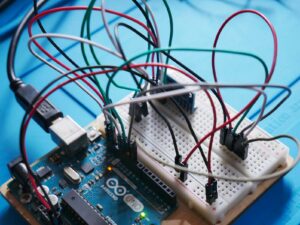Power Washing Tips

Power washing is a highly effective method for cleaning various surfaces, from driveways and decks to house exteriors and sidewalks. By using a high-pressure stream of water, power washing can remove dirt, grime, mold, and mildew, leaving surfaces looking refreshed and well-maintained. However, to achieve the best results and avoid potential damage, it is essential to follow some key building wash tips.
1. Choose the Right Equipment Selecting the right power washer for the job is crucial. Power washers come in different pressure levels, measured in PSI (pounds per square inch), and water flow rates, measured in GPM (gallons per minute). For household cleaning tasks, a power washer with a PSI of 1,300 to 2,400 is typically sufficient. For tougher jobs, such as removing oil stains or stripping paint, a higher PSI may be necessary.
2. Use the Appropriate Nozzle Power washers come with different nozzle types, each designed for specific cleaning tasks. The nozzles are color-coded based on the degree of the spray pattern:
- Red (0 degrees): Extremely powerful and concentrated; use with caution to avoid damage.
- Yellow (15 degrees): Ideal for removing tough stains from concrete and brick surfaces.
- Green (25 degrees): Versatile and suitable for general cleaning of decks, patios, and siding.
- White (40 degrees): Best for delicate surfaces like wood and vehicles.
- Black (soap nozzle): Designed for applying detergents and cleaning solutions.
Choosing the correct nozzle ensures effective cleaning without causing unnecessary damage.
3. Test a Small Area First Before starting on a large surface, test the power washer on a small, inconspicuous area. This helps determine the correct pressure setting and ensures that the surface can withstand the force of the water.
4. Maintain a Safe Distance Holding the power washer too close to the surface can cause damage, such as gouging wood, chipping paint, or eroding concrete. It is generally recommended to start at least two feet away and gradually move closer until the desired cleaning effect is achieved.
5. Use Detergents When Necessary For stubborn dirt and stains, using a cleaning detergent can enhance the power washing process. Make sure to use a detergent specifically designed for power washers and follow the manufacturer’s instructions for application. Let the detergent sit for a few minutes before rinsing for the best results.
6. Follow Proper Safety Precautions Power washers are powerful tools that can cause injury if not used properly. Always wear protective gear, such as safety goggles, gloves, and non-slip footwear. Avoid directing the spray toward people, pets, or electrical outlets.
7. Clean in a Consistent Pattern Using a consistent sweeping motion ensures an even clean and prevents streaking. For vertical surfaces like house siding, start from the bottom and work your way up to avoid streaks caused by dirty water running down.
8. Perform Regular Maintenance on the Power Washer To keep your power washer in good working condition, regularly inspect and clean the nozzle, hoses, and filters. Proper storage, including draining any remaining water from the system, helps prevent damage from freezing in colder months.
Power washing is an efficient and effective way to maintain the cleanliness and longevity of various surfaces. By choosing the right equipment, using the correct nozzle, maintaining a safe distance, and following best practices, homeowners and professionals can achieve excellent results. With proper safety precautions and maintenance, power washing can be a valuable tool for keeping outdoor spaces looking their best.




![boats docked near seaside promenade]](https://uawnews.com/wp-content/uploads/2025/05/prb-sjoubfs-300x200.jpg)